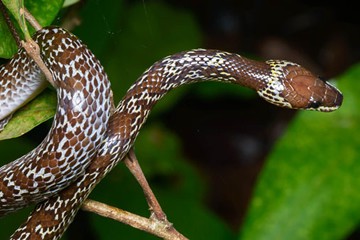Invasive species are the highest impact threat to species in Australia. This is one of the revelations in an important new paper based on expert assessments of the threats to Australia’s nationally listed threatened species.
Michelle Ward and 19 colleagues found invasive species are having a high or medium impact on 42% of nationally listed threatened species [1]. This compares to 27% for habitat loss, degradation and fragmentation, 23% for adverse fire regimes, and 8% for climate change and extreme weather.
The more important message is that Australia cannot solve its extinction crisis unless it overcomes these four massive, often-interacting threats.
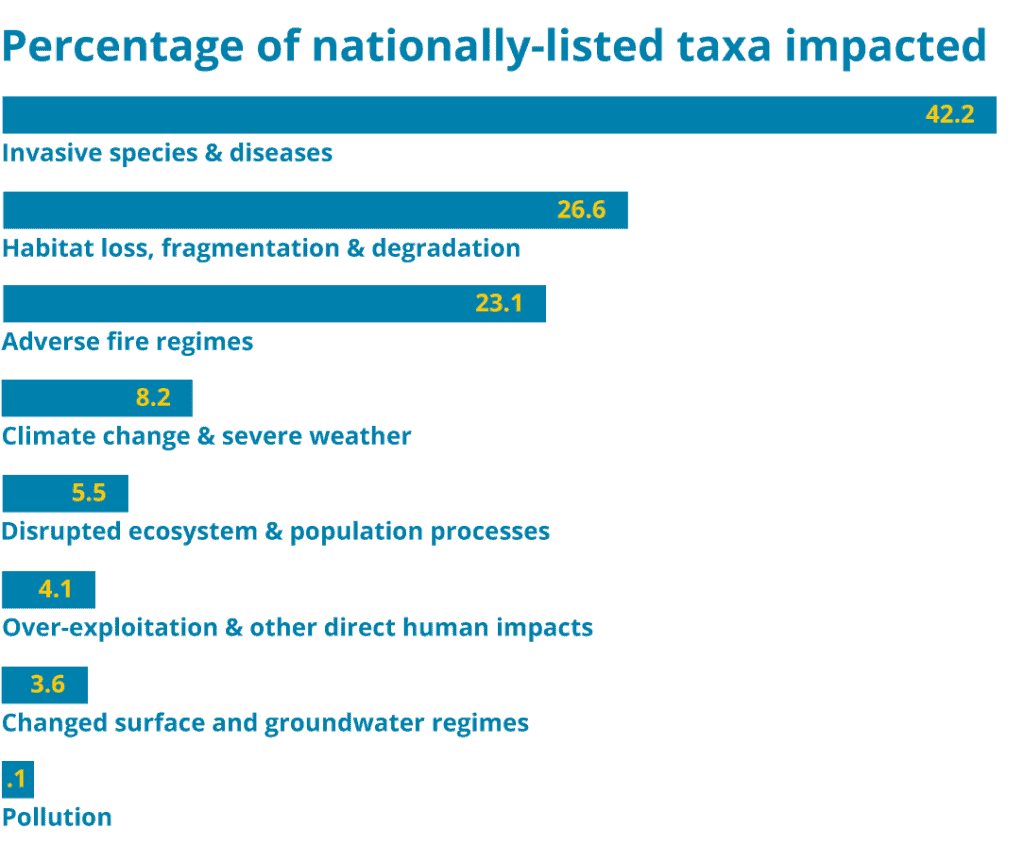
The percentage of nationally listed threatened taxa impacted to a medium or high degree by eight major threat categories.
Note: The threatened species assessed in this study were the 1795 taxa listed in late 2019 as extinct in the wild, critically endangered, endangered or vulnerable. The threatened species list has grown since then. The assessed taxa do not include those listed as conservation dependent (threatened fish species that are the target of commercial fisheries).
There have been at least four such threat assessments over the past decade – all consistent in revealing the same big threats. But the latest assessment is more comprehensive, accurate and nuanced than the others because it:
- Relies on expert assessment rather than just on the Australian Government’s out-of-date database.
- Assesses all listed taxa including marine species.
- Includes a threat category focused on habitat impacts.
- Distinguishes the degree of threat impact (high, medium, low, negligible, data deficient).
The impact ratings will be of great value for prioritising threat abatement endeavours. Of the 4877 threats assessed for the 1795 threatened taxa, 10% are high impact and 43% are medium impact. Of these 2583 high-and-medium impacts, more than 1100 are invasive species and diseases.
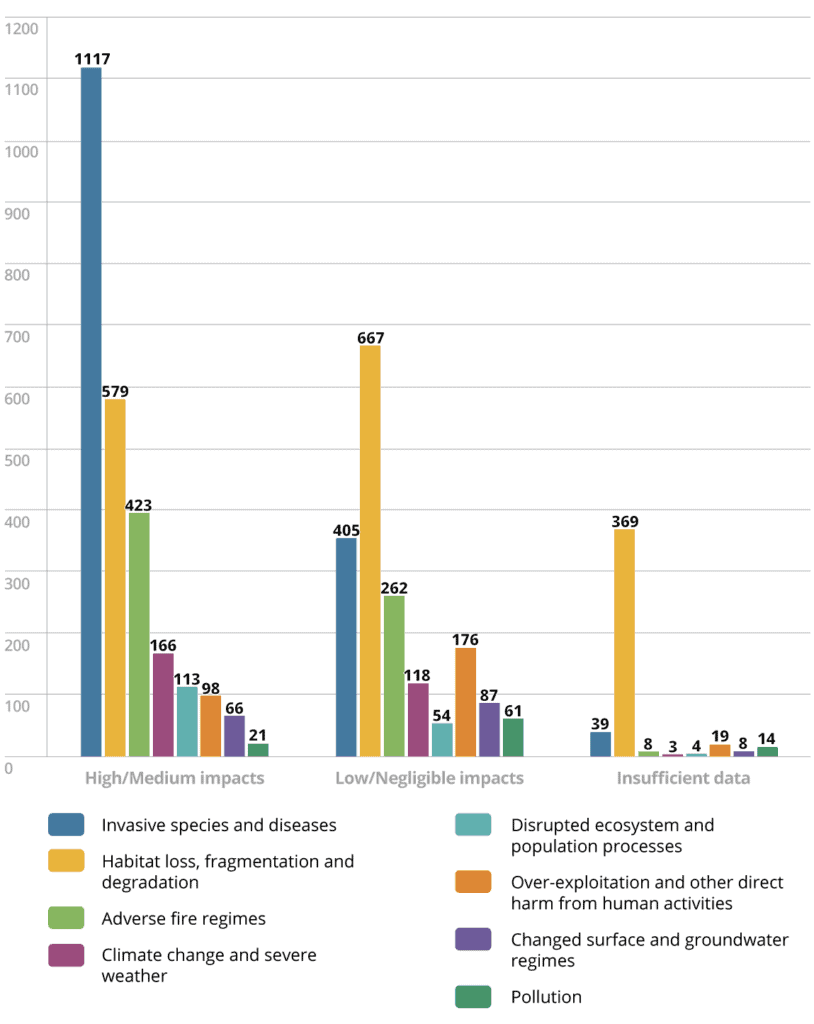
The number of threat impacts rated as high/medium, low/negligible or data deficient.
Note: These represent unique taxon-threat combinations – reflecting the fact that threatened species are often impacted by multiple threats within the same category (eg by weeds and feral cats).
Australia’s national list of threatened species
It’s important to keep in mind that the list of threatened taxa under the Environment Protection and Biodiversity Conservation Act 1999 is not an accurate reflection of the state of Australia’s species – particularly for plants, invertebrates and freshwater fish.
For example, of 22 freshwater fishes assessed by experts in 2020 as ‘highly threatened’, only three were listed nationally as threatened [2] and a 2018 assessment identified 80 highly threatened plants with no national listing [3]. There are hundreds of other rare or declining species in Australia whose conservation status is unknown due to a lack of monitoring.
Ignorance is often the case even for listed species. In the threats assessment, almost 10% of threats to particular species were rated as having insufficient data to score the impact.
All these unknowns highlight the importance of a much stronger focus in Australia on abating the big threats to nature, to save declining species – whether or not they are listed.
Invasive species and diseases
Of the 966 nationally listed species assessed as threatened by invasive species, 757 (42%) suffer high or medium impacts, often from multiple invasive species. The threats are diverse – weeds (41% of invasive threats), predators (mainly cats and foxes, 17%), ungulates such as goats, pigs and deer (11%), diseases (10%), rabbits (9%) and rodents (4%).
One anomaly with the threat assessment is that native invasive animals are not counted in the ‘invasive’ category but are instead included as ‘problematic native species’ in the ‘disrupted ecosystem and population processes’ category. This includes sugar gliders in Tasmania, where they prey on threatened birds, and yabbies and native fish introduced to new waterbodies. For consistency, we recommend native invaders be classified as invasive species – they became ‘problematic’ only when shifted by humans outside their natural range.
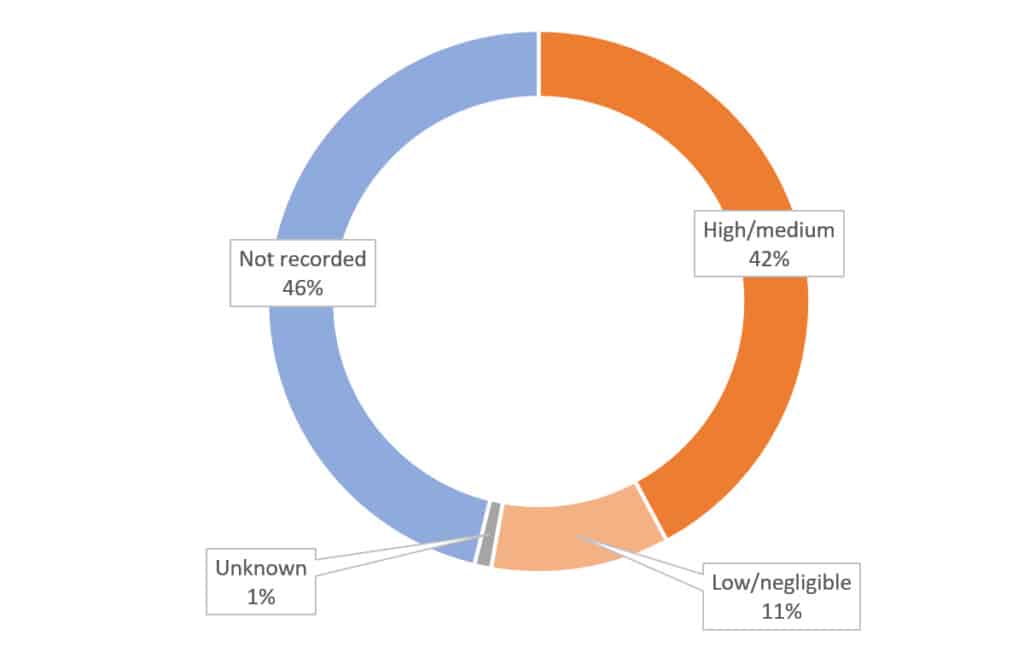
Habitat loss, degradation and fragmentation
Two thirds of listed species (67%) suffer from habitat loss, degradation or fragmentation. Of the medium and high impact habitat threats (27% of species), the main drivers are agriculture (40% of the habitat threats) and roads and railroads (27%). A substantial proportion of habitat impacts (20%) could not be rated due to data deficiencies, mostly for plants.
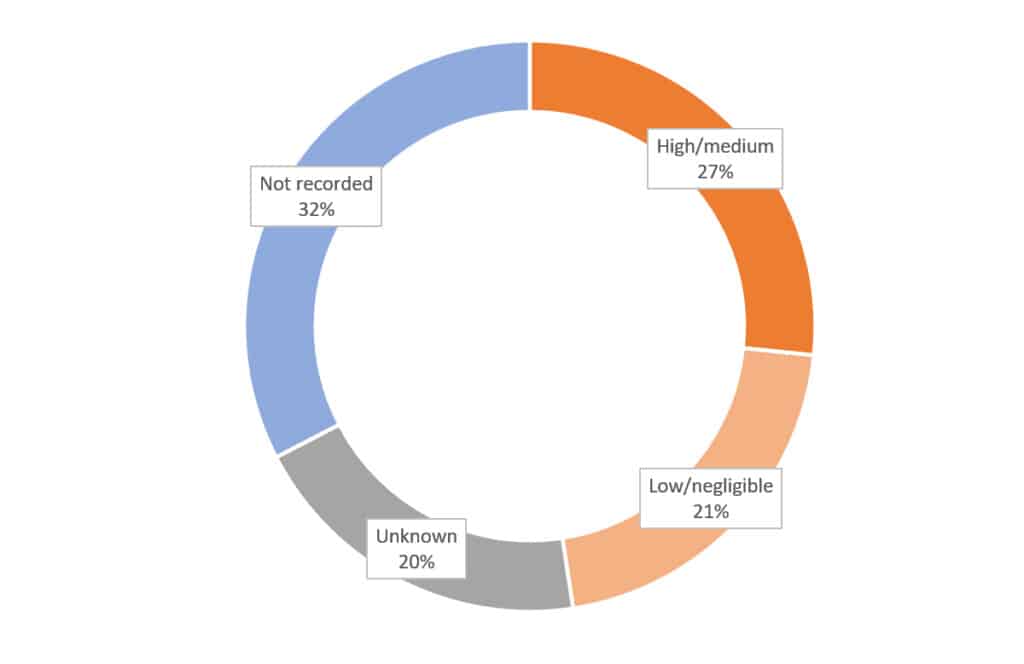
Adverse fire regimes
Despite not yet being listed as a key threatening process, adverse fire regimes threaten 38% of nationally listed species. Of the medium and high impact fire threats (affecting 23% of species, mostly plants), almost half were suppressed fire frequency or intensity (47%) and a fith were increased frequency or intensity (22%). We can expect that proportion to increase once all the additional species threatened by the Black Summer fires are listed.
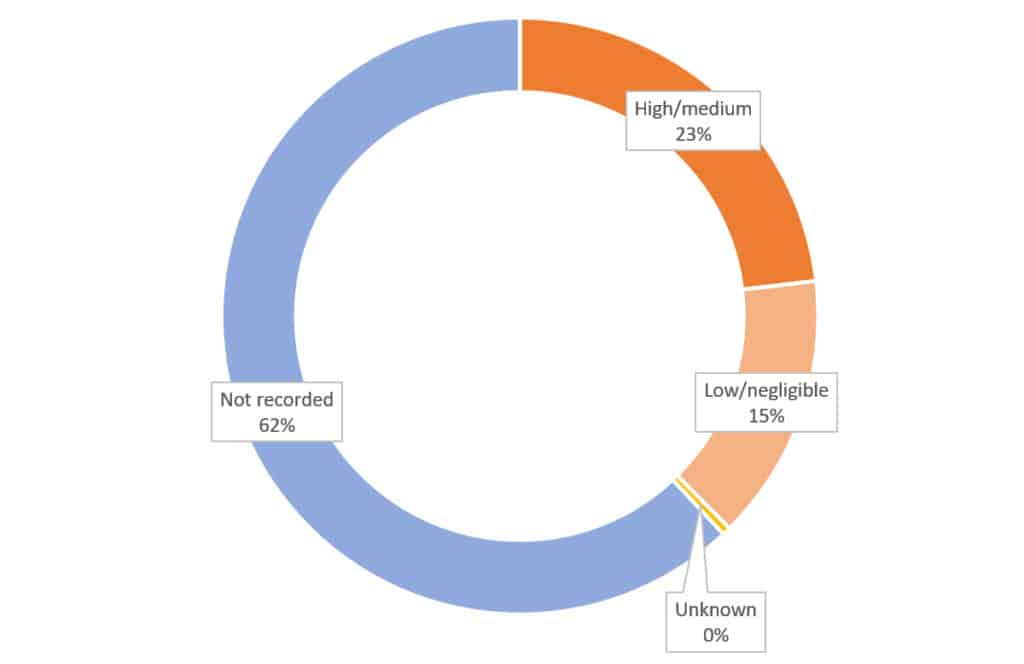
Climate change and extreme weather
Currently, climate change and severe weather threaten 13% of listed species. Of the medium and high impacts (affecting 8% of species), the largest sub-category is increased frequency and severity of droughts (37% of climate threats).
The latest report by the International Panel on Climate Change indicates that this threat category will inevitably rapidly expand. For many species the best we can do for them is reduce all their other threats to foster their resilience to climate pressures. And for that, Australia needs a much more ambitious, systematic, nationally coordinated and well-funded threat abatement system – as advocated by the Threats to Nature Project hosted by the Invasive Species Council.
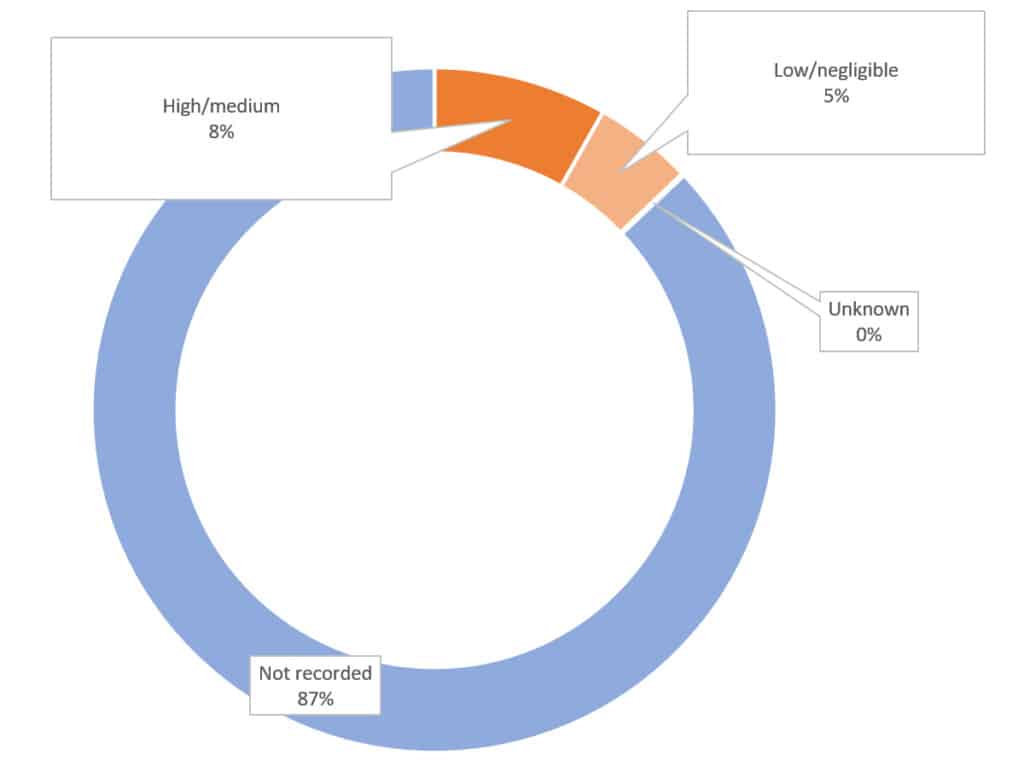
References
- Ward M, Carwardine J, Yong CJ, Watson JE, Silcock J, Taylor GS, et al. A national‐scale dataset for threats impacting Australia’s imperiled flora and fauna. Ecol Evol. 2021.
- Lintermans M, Geyle HM, Beatty S, Brown C, Ebner BC, Freeman R, et al. Big trouble for little fish: identifying Australian freshwater fishes in imminent risk of extinction. Pac Conserv Biol. 2020.
- Silcock J, Fensham R. Using evidence of decline and extinction risk to identify priority regions, habitats and threats for plant conservation in Australia. Aust J Bot. 2019;66: 541–555.

